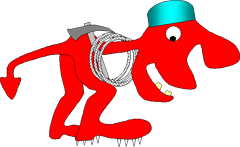
Officially, the date beginning the Modern Physics is Planck's lecture in Berlin in December 1900, in which "quants" of energy are nominated for the first time. Quants created new Physics areas, like quantum mechanics and electrodynamics and changed our view, not only on Physics but on the Philosophy of Knowledge, bringing also new revolutionary applications, like lasers.
However, giving any date is a simplification. Already in sixties of the XIX century electron beams ("cathodic rays") were produced while as a official date of the "discovery" of electron Thompson's article written in 1897 is taken. Beginning of the XX century established the idea of atom (also through Einstein's paper about Brown's motions and Perrin's works) but by the end of XIX century the indivisibility of atom was "mined" by Mrs and Mr Curie works.
Physics cataloguing is also an oversimplification, especially in Modern Physics. Mass spectrometry was used to measure atom masses and for the discovery of isotopes. Today, it is widely used in food quality validation. Quarks and gluons, neutron stars and black holes are all fascinating, but no less fascinating is biophysics and geophysics. And finally solid state physics, persistently digging under the main stream of the discoveries, but without which also this (virtual) exhibition would not be possible.